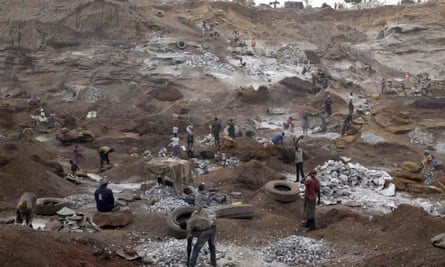Child labour is not something any business wants in its supply chain. Yet with an estimated 168 million children in some form of labour globally, 98 million of them working in agriculture and 12 million in manufacturing and industry, it is an uncomfortable reality of globalised commodities that businesses cannot afford to avoid.
The US Department of Labor’s latest annual report on goods made with child labour makes for sobering reading. According to the report, child labour is still present in many of the world’s largest global commodities, from gold, coffee, tobacco and bananas to sugarcane, cotton and rubber.
Sub-Saharan Africa has the highest number of child labourers in the world – 59 million children between the ages of five and 17 are in the worst forms of hazardous work, with the International Labour Organisation (ILO) estimating that more than one in five children in Africa are employed against their will in quarries, farms and mines.
Businesses sourcing commodities, goods and services from the region have to accept that this is not an issue they can avoid, says Mark Dummett, business and human rights researcher at Amnesty International.
“Child labour is a reality of major industries and many of the goods and commodities that we buy and consume today,” he says. “The image of a child in a mine or in a factory or field is not something that brands want to be associated with, but in an age of increased transparency, accountability and traceability, to hide away from it is not only doing a disservice to the children involved, it is also risky for the business.”
Aidan McQuade, director of Anti-Slavery International, points to recent legislation in the UK and the US as a clear sign that the pendulum is swinging against businesses that don’t swiftly work out the right ways to engage with the prospect of child labour being associated with their brand.
“Now we’ve got the UK’s Modern Slavery Act, and legislation in the US such as Barack Obama’s Trade Facilitation and Trade Enforcement Act that bans imports made with child labour, it isn’t going to be enough for businesses to say this is a problem that’s impossible to solve,” he says.

Child slavery or labour?
For McQuade, it is often a problem of definitions – many businesses don’t fully understand what they are dealing with:
“Many businesses still can’t define the difference between child labour and the worst forms of child work and slavery. In sub-Saharan Africa, much child labour exists within the confines of the family, where generally speaking they have the best interests of the child at heart, so what businesses are often facing is a livelihood as well as a child protection issue.”
According to the ILO, not all work that children do should be considered child labour. The term “children in employment” is used to broadly describe light and safe work that allows children to attend school and contributes to family income.
The ILO definition of child labour is work that is “mentally, physically, socially or morally dangerous and harmful to children” and interferes or deprives them of schooling. The worst forms of child labour are defined as child labour that is exploitative or hazardous, including all forms of slavery and trafficking.
Chocolate’s bad image
One industry now intrinsically linked to child labour in west Africa is cocoa. The chocolate industry has struggled to stamp out widespread child labour in farms across west Africa since a series of exposés over a decade ago, which caused deep reputational damage and latterly led to a series of lawsuits against chocolate companies by furious consumers.
“There has been a lot of catastrophic communication around child labour in the cocoa industry, where we have got a lot of attention that other commodities perhaps have not,” says Cathy Pieters, director of chocolate multinational Mondelez’s Cocoa Life programme.
Despite the fact that over a decade on from the chocolate child slavery reports children are still engaged in hazardous work on cocoa plantations across west Africa, Pieters says cross-industry programmes such as the International Cocoa Initiative are a sign that chocolate companies are committed to finding solutions.In an industry like cocoa, which has been forced to invest heavily in understanding the challenges it faces with child labour, the focus of many corporate initiatives – including the Cocoa Life programme – is shifting away from traditional solutions such as school building and education towards agricultural production and community financing.
“People on the ground are scared of being accused of child labour and everybody wants the best for their children so going in with finger pointing attitude can be risky,” says Pieters. “What is going to solve the issue is community engagement, helping cocoa farmers get better yields, and for people on the ground to take on that responsibility.”
While Pieters believes this new era of corporate transparency will aid the industry’s efforts to tackle child labour, she says the industry has to continue working together to find solutions.
“We know that, in the right conditions, a child helping on a farm is not necessarily a bad thing, for example after school or weekends, for limited hours and safely as part of the family business,” she says.
“What we need to do as an industry is urgently stamp out the worst forms of child labour and trafficking, and accept that there is a difference between that form of child labour and a child helping out their family on a farm. These are complex challenges we have to be prepared to face.”

Comments (…)
Sign in or create your Guardian account to join the discussion